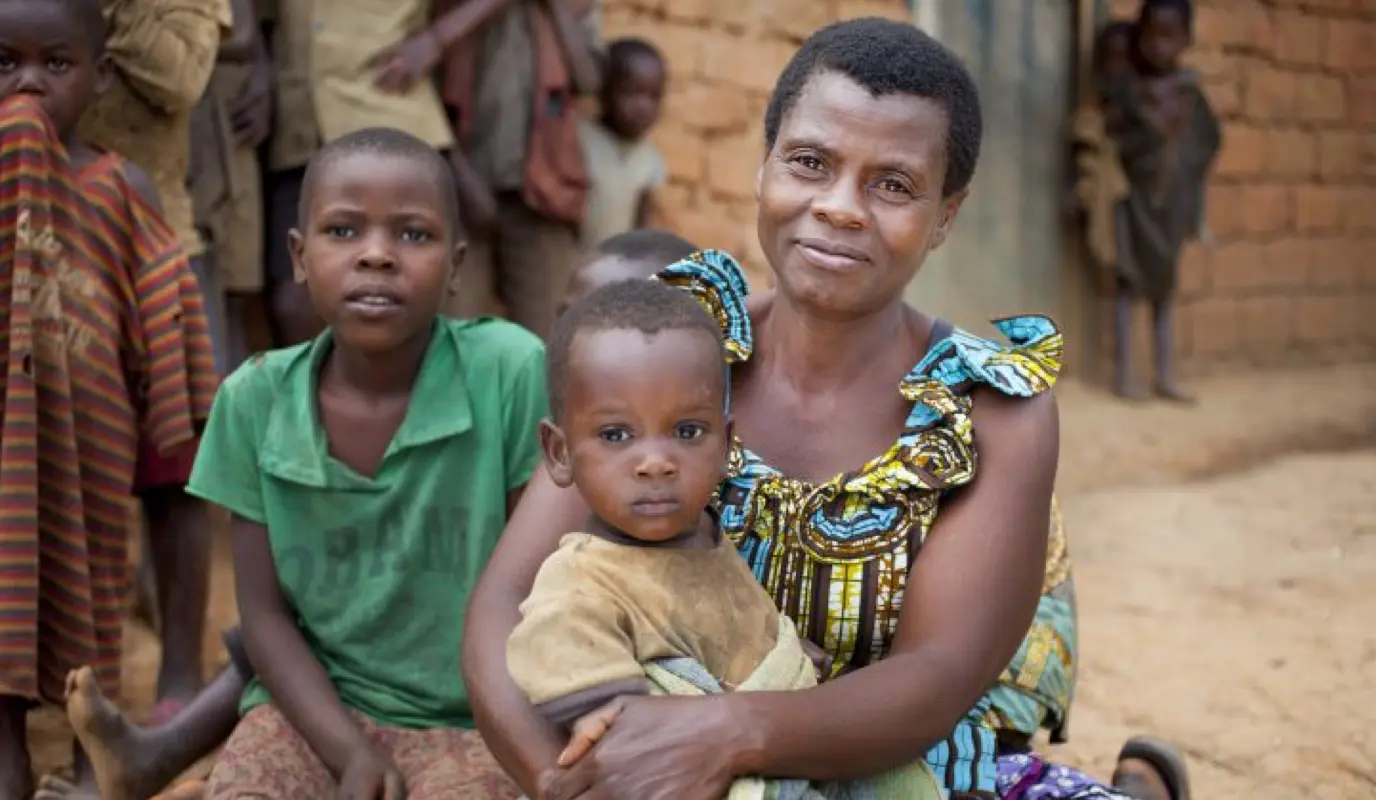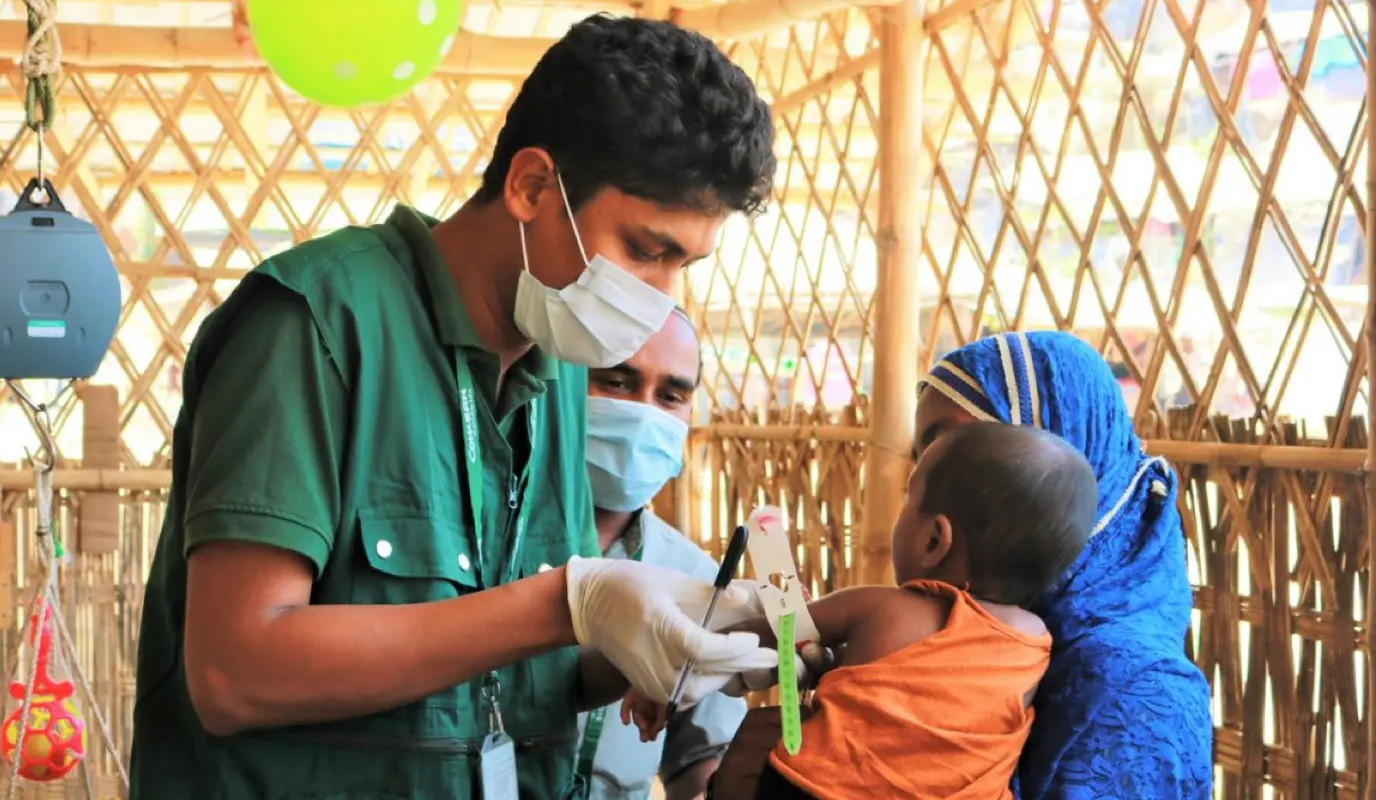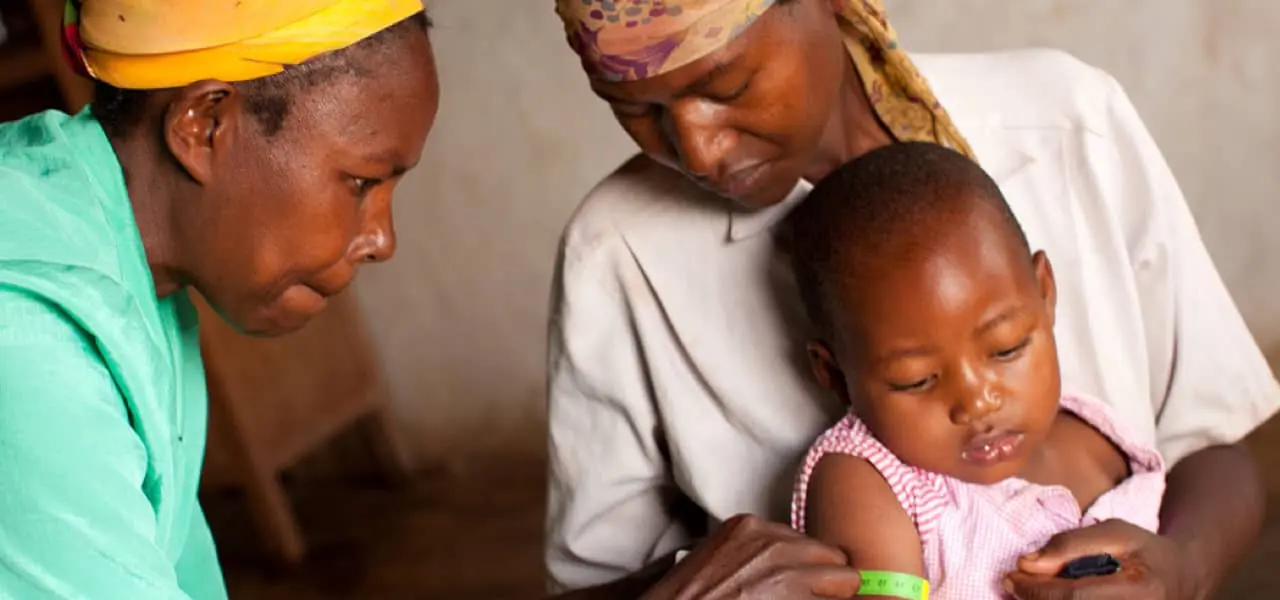PLEASE NOTE: This is a legacy program and no longer active.
The Challenge
Globally, 5.2 million children die before their fifth birthday. Nearly half of these deaths occur within the first month of life, and are caused by preventable, treatable illnesses such as malaria, pneumonia, diarrhea, and malnutrition.
When a child gets sick, every minute between infection and treatment counts — especially for children under 5. For decades, however, mothers faced the challenge of being hours away (on foot) from the nearest clinic or treatment center. Taking into account medical costs and often days without work, saving a child’s life could mean sending a family deeper into poverty.

Through To Two
The first two years of a child’s life (from pregnancy to birth) are critical to their physical and mental development. If a mother doesn’t get enough nutrients during her pregnancy, those repercussions are felt by the fetus, which is why prenatal care is an important piece of the puzzle.
A lack of adequate nutrition and care in this time could lead to negative side effects that become permanent. A vicious circle follows where children are less likely to have healthy children themselves. Poverty, and health issues, become passed on from one generation to the next.
Child Survival and Health For All
Run from 1998 to 2019, our child survival programs broke the mold of traditional care and treatment models. Instead of relying on services provided by health clinics, Concern worked with local partners, ministries of health, and qualified community volunteers to bring basic health care into homes and work with traditional providers to achieve a better standard of care.
This community-based approach dramatically increased the number of children treated for basic illnesses through a few key factors:
- Saving time for parents by allowing their children to be treated at home
- Encouraging sustainable community ownership
- Improving access to and quality of care
It’s a unique but common-sense approach that puts women in control of the fight against deadly, but preventable, diseases. This agency and autonomy also worked to course-correct gender inequalities in many cultures.
The concept seems simple, but the Child Survival program was the largest USAID-NGO partnership for health, and the second-largest overall USAID-NGO partnership in the organization’s history, and reached governments, communities, and children in 65 countries.
Child survival was the largest USAID-NGO Partnership for health, the second-largest overall USAID-NGO partnership in the organization's history, and ran in 65 countries.
How It Worked
First, Concern’s Child Survival teams assessed what resources were available in each community, and identified key people of influence (health providers, village health committees, volunteers, traditional healers, social and religious leaders, etc.). These are both key to building a unit that will respond to the specific needs of a community.
Next, communities elected community health volunteers. Concern invested in their training and education, with a focus on identifying and treating common diseases in children. We also supported each country’s Ministry of Health, and worked with mothers on making simple but lifesaving behavioral changes (including handwashing and seeking professional care within 24 hours of symptoms).
Once volunteers were fully prepared, they received a kit of critical health supplies. Their homes became, and remain, lifesaving first-aid posts for their neighborhoods. They also received continuing education and refresher trainings, along with local health professionals. A collaborative bond was fostered between volunteers and professionals to create a network of care that continues today.
20+ Years Later
Concern began working with the Child Survival framework in 1998 in Bangladesh. When the project concluded in 2004, it had reduced the local equity gap by 15%.
From there, we managed 10 projects across a total of seven countries: Bangladesh, Burundi, Haiti, Kenya, Niger, Rwanda, and Sierra Leone. In Rwanda, 30% of all community treatments for pneumonia, diarrhea, and malaria came through Child Survival, and data showed a corresponding reduction in child mortality rates.
In Rwanda, 30% of all community treatments for pneumonia, diarrhea, and malaria came through child survival. In Niger, the rate of caregivers seeking treatment for their child's illness within the first 24 hours of symptoms quadrupled.
In Niger, care-seeking behaviors improved significantly, as caregivers brought their sick child to a health facility instead of a traditional healer or other informal provider. The rate of caregivers seeking treatment within the first 24 hours of symptoms quadrupled.
With support from USAID, Irish Aid, and donors like you, we invested over $31 million in our first 20 years, and reached 1.9 million women, children, community volunteers, and health workers. Children who were treated through this program are now volunteers themselves, or bring their own children to community healthcare volunteers when they have a fever.
We not only helped to strengthen local and national health systems, but have also contributed to the advancement of global health best practices through our experience. We’ve used our learnings to advocate for improved systems and policies that prioritize the poorest and most marginalized.


